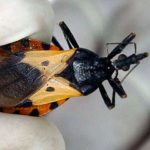Published in CANCER, a Journal of the American Cancer Society
Washington, D.C., November 10, 2024 — New research identifies a significant link between pesticide exposure and the risk of prostate cancer in the United States, highlighting the dangers of certain chemicals that are widely used in agriculture. The findings, published by Wiley in the journal CANCER, reveal 22 pesticides consistently associated with increased prostate cancer incidence, with four also linked to higher prostate cancer mortality rates.
The study, led by Dr. Simon John Christoph Soerensen of Stanford University School of Medicine, utilized data from an environment-wide association study that spanned nearly two decades. Researchers evaluated 295 pesticides across various counties in the U.S. to identify any associations with prostate cancer, accounting for the slow-developing nature of the disease. Data from two periods—1997-2001 and 2002-2006—were analyzed for pesticide use, with prostate cancer outcomes assessed 10 to 18 years later.
Key Findings
Among the 22 pesticides linked to an increased risk of prostate cancer, three had previously been associated with the disease. This includes 2,4-D, one of the most common pesticides in the U.S. The remaining 19 pesticides, which had not been previously linked to prostate cancer, encompass a variety of herbicides, fungicides, insecticides, and a soil fumigant.
The study also identified four pesticides associated with both prostate cancer incidence and mortality. These include three herbicides—trifluralin, cloransulam-methyl, and diflufenzopyr—and the insecticide thiamethoxam. Notably, while trifluralin is classified by the Environmental Protection Agency (EPA) as a “possible human carcinogen,” the other three pesticides are currently considered “not likely to be carcinogenic” or have shown evidence of “non-carcinogenicity.”
Implications for Public Health
The research underscores the potential role of environmental factors, like pesticide exposure, in explaining geographic variations in prostate cancer rates and outcomes across the U.S. Prostate cancer, one of the most common cancers among men, has shown persistent regional disparities in incidence and mortality. This study highlights the need for further research on the health impacts of commonly used pesticides and suggests that stricter regulations may be necessary for certain chemicals.
“This research demonstrates the importance of studying environmental exposures, such as pesticide use, to potentially explain some of the geographic variation we observe in prostate cancer incidence and deaths across the United States,” said Dr. Soerensen. “By building on these findings, we can advance our efforts to pinpoint risk factors for prostate cancer and work towards reducing the number of men affected by this disease.”
As the agricultural industry in the U.S. continues to rely heavily on pesticides, these findings may catalyze policy discussions on the regulation of chemicals linked to cancer risks. Further investigation is needed to evaluate the mechanisms by which these pesticides may contribute to cancer development, and additional studies could help develop targeted strategies to mitigate the impact of environmental risk factors on public health.
Reference:
Soerensen, S. J. C., et al. (2024). Pesticides and prostate cancer incidence and mortality: An environment-wide association study. Cancer. DOI: 10.1002/cncr.35572












